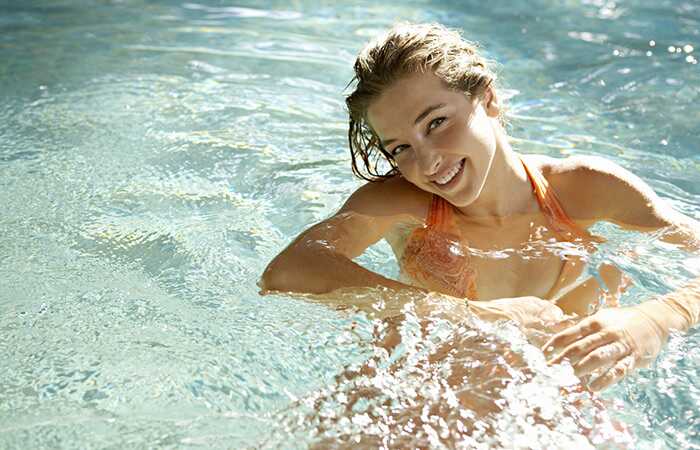Pulling laps is healthy for everyone
Swimming laps in your pool puts less strain on your joints compared to other sports with Lifeguard Training. That also makes sense; in water, you are essentially weightless and your joints do not have to deal with the extra influence of gravity.
Secondly, water gives a lot of resistance. The density of water is about 800 times that of air. As a result, swimming is an excellent resistance workout for many muscle groups. Your whole body, but especially your hips, glutes, arms, and shoulders have real work to do. Training with resistance ensures a better condition, good fat burning, and building muscle mass.
How do I keep swimming healthy and fun as a beginner?
A full-body workout, which swimming actually is, is best built up in a dosed manner. For beginners, it’s a good idea to start with a few laps, take a break, and then alternate with a few laps in a different stroke. It’s about staying busy and giving your body enough time to recover. Set realistic goals and start slowly building up the number of laps.
Swimming laps as a workout for the whole family
Then you can increase the pressure by swimming laps faster. Then your workout will be more intensive. Alternate your strenuous workout with exercises that are more relaxed in nature, so that your body has sufficient opportunity to recover. Swimming laps is much more fun if you don’t do it alone, but together with the whole family: this way everyone stays fit and healthy. Alternate training with fun water games.
What results can I expect?
You will notice after a short time that swimming is healthy for you. Each week, you can swim more lengths with seemingly the same effort. You feel that your condition is improving. You will probably also notice that your clothes are a bit looser. Did you know that you can burn between 450 and 500 kilocalories with a gentle swimming session? If you are able to train really strenuously for an hour, you will come close to 800 kilocalories. Almost unnoticed, swimming laps also have a very positive effect on your heart and blood vessels. Due to the continuous work that you have to do while swimming or recreationally in the water, your heart continues to work well. After an hour or two of walking, jogging, or cycling, it’s no wonder you arrive sweatily and perhaps a little overheated. Do you choose to swim,
It is clear that swimming is healthy: a better condition, healthy body weight, stronger muscles, and joints. Swimming laps is a great way to get and stay fit.
How deep can a swimming pool be?
If you want to have a swimming pool built-in without a permit, there are no requirements for the depth of the swimming pool. One and a half meters as the depth of a swimming pool is strongly advised. You need a planning permit if the total area of uncovered structures in your garden exceeds 80 m2. Non-covered constructions also include a possible pond and a terrace. If you have a pond and terrace, their shared surface determines which play area you still have to build a swimming pool. Your pool must be located in your backyard less than 30 meters from your home and more than 1 meter from your plot boundary. You also need a permit if you build your swimming pool in a sensitive area.
Must Read: What Swimming for a Herniated Disc?

